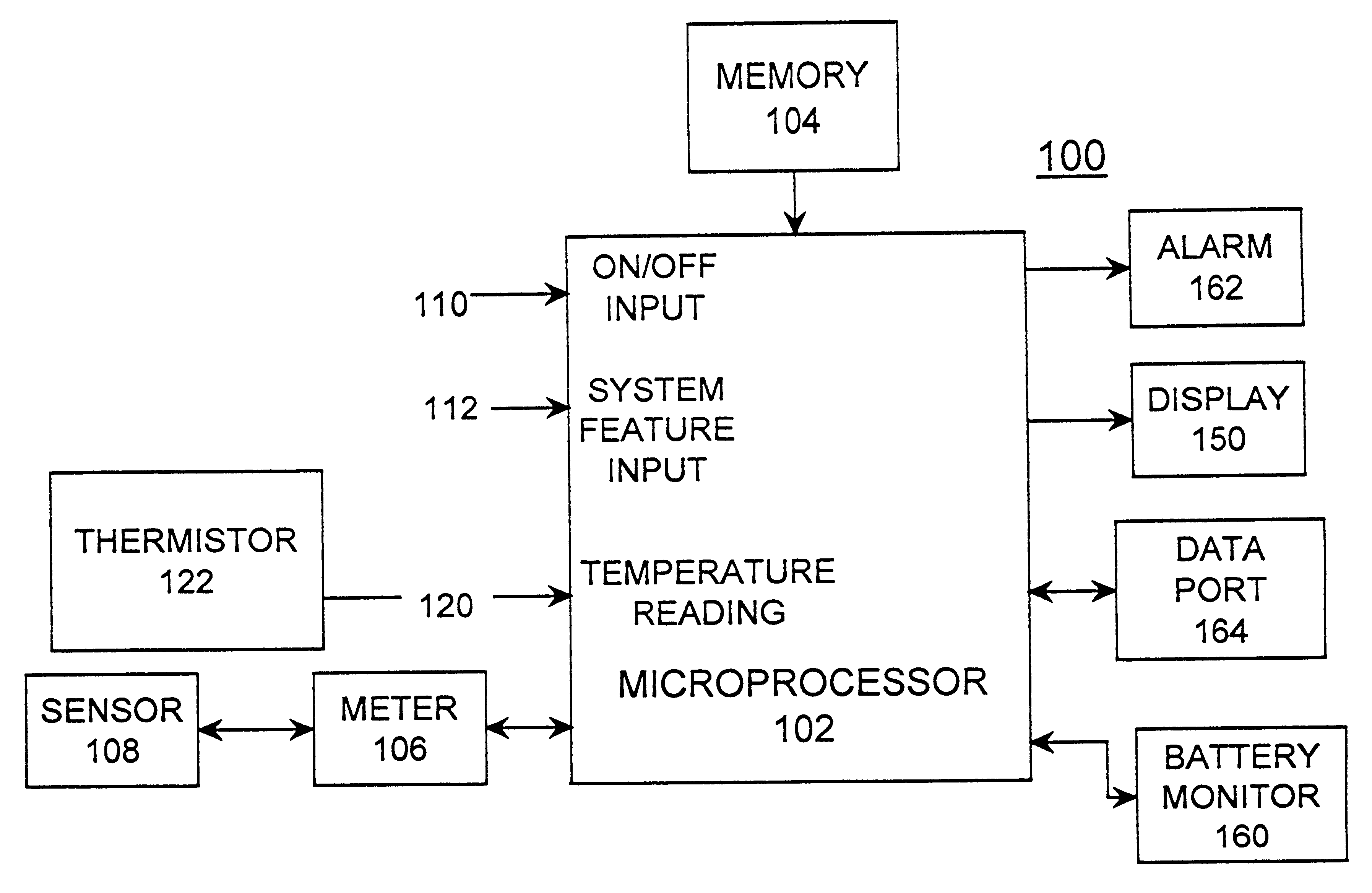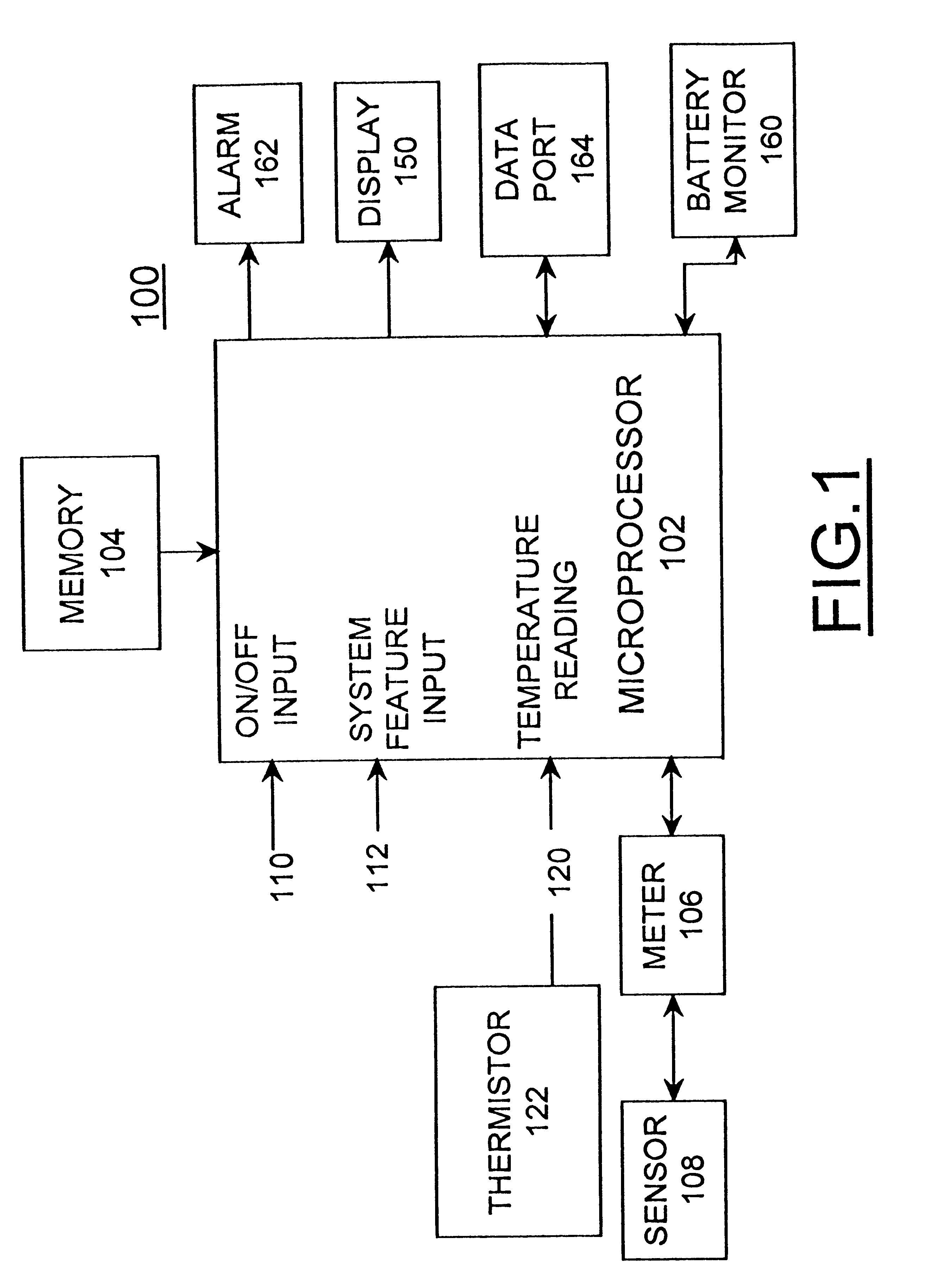Method and apparatus for correcting ambient temperature effect in biosensors
- Summary
- Abstract
- Description
- Claims
- Application Information
AI Technical Summary
Benefits of technology
Problems solved by technology
Method used
Image
Examples
Embodiment Construction
The following describes an exemplary procedure used for determining the temperature correction coefficients (I.sub.1, I.sub.2, S.sub.1, S.sub.2 in Equation 2). First venous heparinized whole blood (.sup..about. 45% hematocrit) from a single donor was spiked close to different glucose concentrations (values determined by the Yellow Springs Instrument, YSI, reference method and corrected for any known sample interferences) and tested in system 100 instruments at different environmental chamber temperatures (Table 1, e.g. samples of 50 and 400 mg / dL glucose at 8.7, 16.7, 23.9, 30.6 and 38.2.degree. C.sub.x.) The Yellow Springs Instrument and method are described by Conrad et al., in the February 1989 "Journal of Pediatrics" Pages 281-287 and by Burmeister et al., in "Analytical Letters", 28(4), 581-592 (1995). High relative humidity (65 to 85%) was maintained in the chamber in order to prevent evaporative cooling, and the sample was equilibrated to the chamber temperature; this way the...
PUM
 Login to View More
Login to View More Abstract
Description
Claims
Application Information
 Login to View More
Login to View More - R&D
- Intellectual Property
- Life Sciences
- Materials
- Tech Scout
- Unparalleled Data Quality
- Higher Quality Content
- 60% Fewer Hallucinations
Browse by: Latest US Patents, China's latest patents, Technical Efficacy Thesaurus, Application Domain, Technology Topic, Popular Technical Reports.
© 2025 PatSnap. All rights reserved.Legal|Privacy policy|Modern Slavery Act Transparency Statement|Sitemap|About US| Contact US: help@patsnap.com



